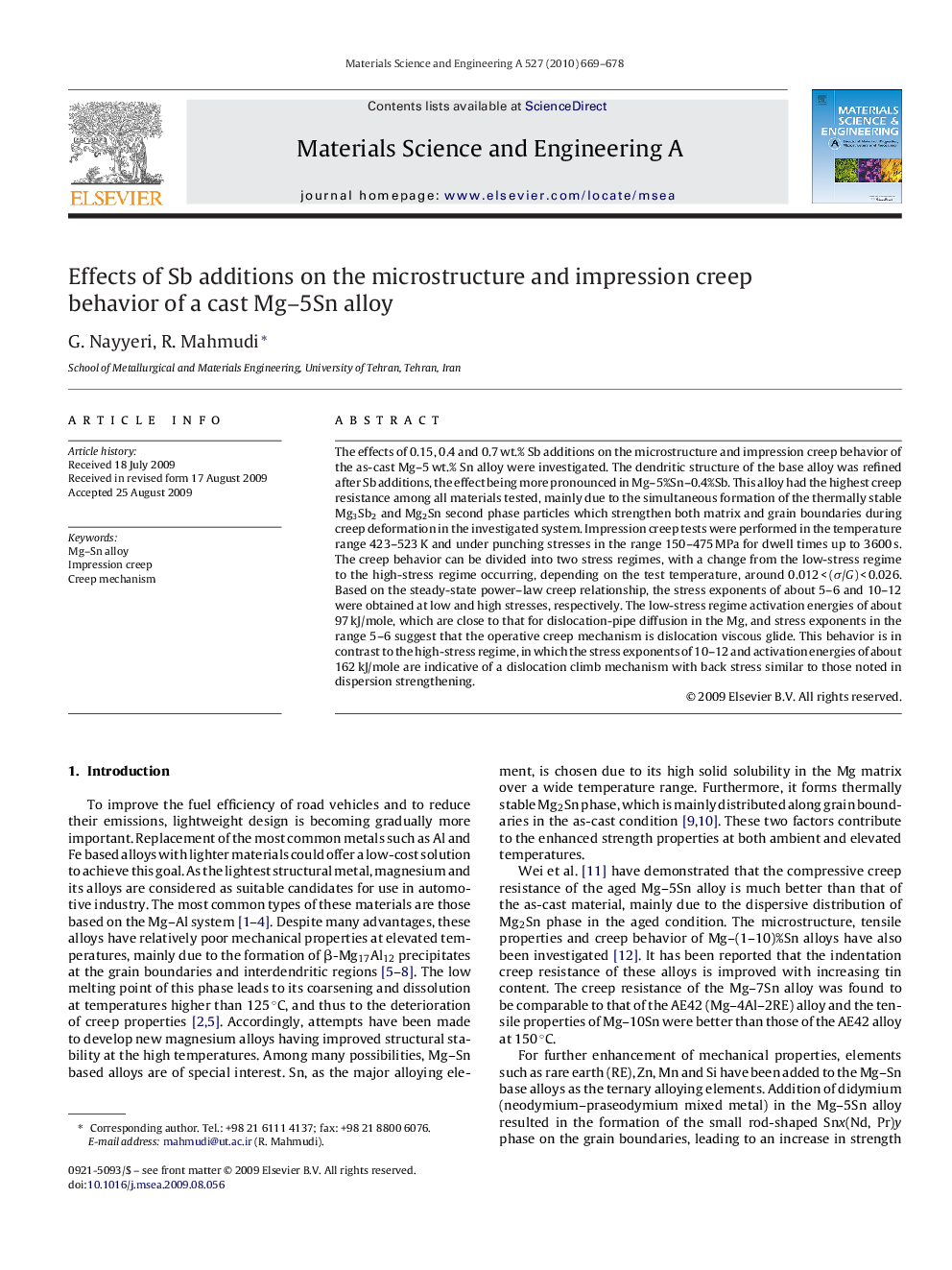| Article ID | Journal | Published Year | Pages | File Type |
|---|---|---|---|---|
| 1579942 | Materials Science and Engineering: A | 2010 | 10 Pages |
Abstract
The effects of 0.15, 0.4 and 0.7Â wt.% Sb additions on the microstructure and impression creep behavior of the as-cast Mg-5Â wt.% Sn alloy were investigated. The dendritic structure of the base alloy was refined after Sb additions, the effect being more pronounced in Mg-5%Sn-0.4%Sb. This alloy had the highest creep resistance among all materials tested, mainly due to the simultaneous formation of the thermally stable Mg3Sb2 and Mg2Sn second phase particles which strengthen both matrix and grain boundaries during creep deformation in the investigated system. Impression creep tests were performed in the temperature range 423-523Â K and under punching stresses in the range 150-475Â MPa for dwell times up to 3600Â s. The creep behavior can be divided into two stress regimes, with a change from the low-stress regime to the high-stress regime occurring, depending on the test temperature, around 0.012Â <Â (Ï/G)Â <Â 0.026. Based on the steady-state power-law creep relationship, the stress exponents of about 5-6 and 10-12 were obtained at low and high stresses, respectively. The low-stress regime activation energies of about 97Â kJ/mole, which are close to that for dislocation-pipe diffusion in the Mg, and stress exponents in the range 5-6 suggest that the operative creep mechanism is dislocation viscous glide. This behavior is in contrast to the high-stress regime, in which the stress exponents of 10-12 and activation energies of about 162Â kJ/mole are indicative of a dislocation climb mechanism with back stress similar to those noted in dispersion strengthening.
Related Topics
Physical Sciences and Engineering
Materials Science
Materials Science (General)
Authors
G. Nayyeri, R. Mahmudi,
